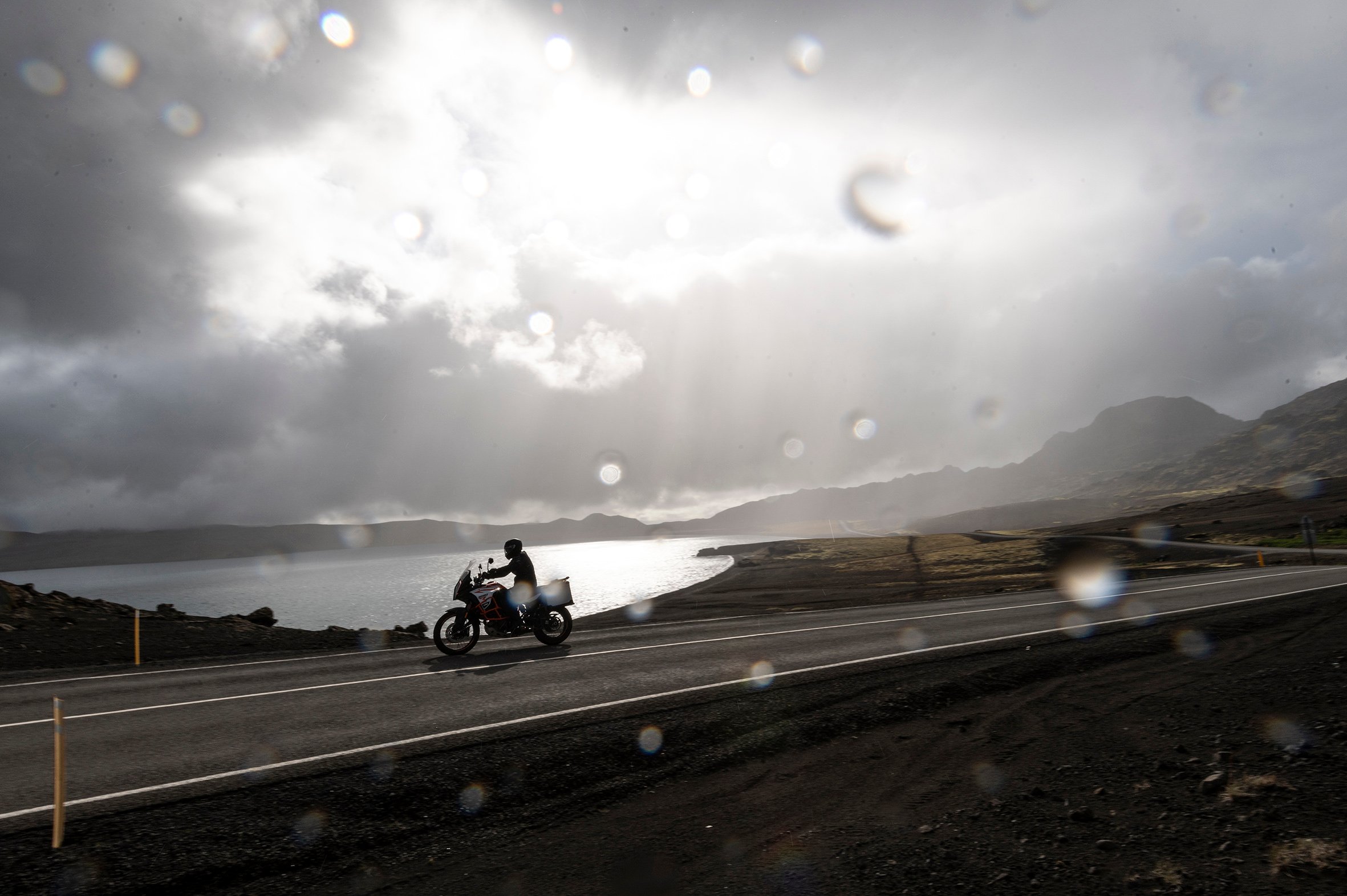Riding in the spring and the fall is often a pleasure. You can meet with the perfect temperatures and fairytale landscapes, in the colors of both seasons. But the intermediate seasons come complete with unpredictable and very variable weather. If you’re about to go on a journey, a day trip or even just get around, it’s good to be ready for anything: The rain is always looming.
Having complete control of the road is essential to our safety and that of others. For a view that’s always great even when it rains, choosing the right visor is a must. In bad weather the best choice is always a clear visor. If the bike trip lasts several hours you can take a darker spare visor to cope with any change in the weather: It doesn’t weigh much and you can easily put it in your backpack. In this case, always remember to protect it from any smears with a plastic bag or cloth wrapped around it.
To avoid fogging, the Pinlock visor is a must, to be applied to the internal side of the visor. The Pinlock creates an intermediate chamber and reduces the difference in temperature between the inside and outside of the helmet, preventing fogging when the air temperature is particularly low or when there is a lot of humidity. The performance of the Pinlock is measured in the lab and can be identified through a number - 70 or 120 - that corresponds to the number of seconds for which a visor equipped with Pinlock can resist fogging under extreme conditions, far more severe than found in practice. In fact, in real conditions, Pinlock is a guarantee that condensation will not form.

There are various types of water-resistant jackets, but each of them incorporates a waterproof membrane, like Gore-Tex®or D-dry®. Waterproof membranes of this type are breathable, and avoid the annoying ‘plastic bag’ effect. Their construction features tiny holes to efficiently expel the heat and moisture generated inside the clothing, without letting water in from outside.
The laminated construction, with membrane bonded to the exterior, is the most sophisticated and effective against the weather, because it completely prevents the clothing from getting wet. Drops of water glide away so that the material doesn’t get soaked, also due to the water-repellent treatment, common to all clothing.
Then there are products with the membrane applied internally or removable, which offer other advantages of their own, like simpler manufacture and greater versatility, since the article can be configured even without the membrane and become lighter and more suitable for the summer as required.
To deal with the worst conditions, or if you decide to wear a non-waterproof suit, it’s good to have a rain kit with you, to wear on top of pants and jacket. Two options are available: jacket-pants combination or one-piece suit.
The first solution is the most practical. You can easily put it on and, above all, take it off in a hurry. On the other hand, the one-piece suit has better performance against water, as it has no gaps between the bottom and the top that would be bound to make it easier for moisture to get through. It’s slower to put it on and it can also be something of a challenge to keep wearing on long stops.
In both configurations, the kit has to be made of completely waterproof and elastic material for greater comfort when riding. The parts of the jacket also have to be welded together seamlessly, to prevent water from entering through holes in them. Alternatively, the seams must be taped internally. The best strategy is to pack our trusty rain kit and make sure it’s always under the saddle or in the top box, so you never risk forgetting it and have it to hand when you need it.
The extremities are the first to suffer the cold in wet weather. Gloves and boots with a waterproof membrane are always the best choice when tackling adverse weather conditions, even if it’s just cold. As an emergency solution, if you don’t have suitable material, you can resort to waterproof overgloves and overboots. They can be folded easily and take up very little space. They can also be put on very quickly and are guaranteed to be effective against the elements.
A useful measure to save hands and feet from moisture is to wear gloves and boots strictly under the rain garment you’re wearing. That means that water dripping down from sleeves and legs won’t get into the openings of gloves and boots.
In case of rain or, as may often happen, fog and rain, it’s good to get into the habit of wearing high-visibility clothing, with colors and reflective materials designed specifically to make riders easier to recognize on the road, even in difficult conditions.
Both hi-vis rain suits or even simpler hi-vis jackets, foldable and very compact, to always carry with you, are options in this category. Making yourself highly visible in difficult conditions is key to safety when riding, both ours and that of other road users.
No matter the season, the risk of rain is often an obstacle to our motorcycle riding. But why give up a great trip with friends or a journey? You just need the right equipment to be able to take changing weather in your stride, a few simple steps to enjoy landscapes and the unique colors of every season, always in complete comfort.